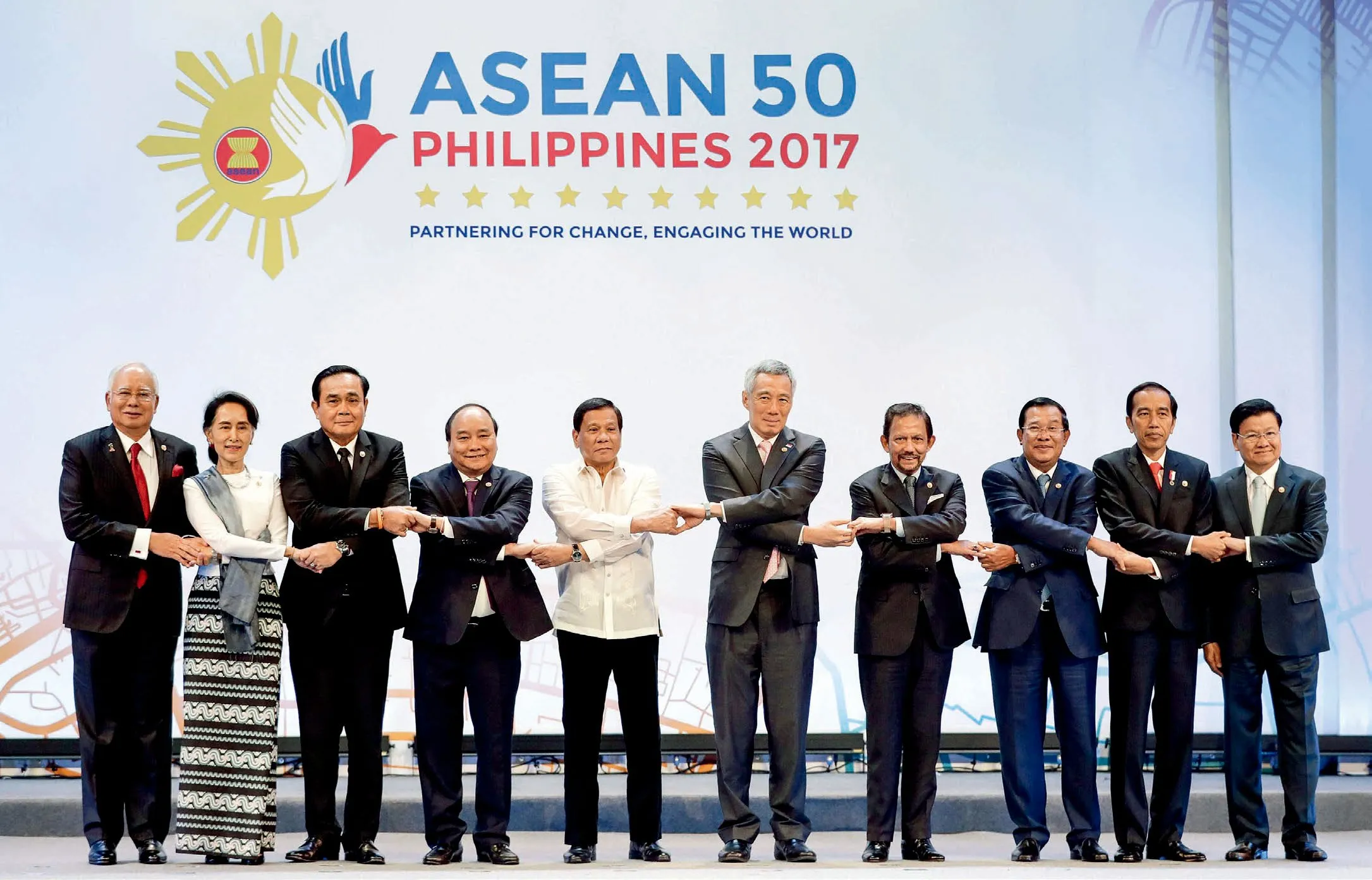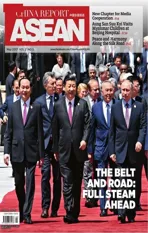Manila Summit: Model for Regional Integration
2017-07-18
Manila Summit: Model for Regional Integration

Leaders pose for a group photo at the opening ceremony of the 30th ASEAN Summit held in Manila, the Philippines, on April 29, 2017.
ASEAN members forge ahead in pursuit of higher-level integration
The 30th summit of the Association of Southeast Asian Nations (ASEAN), which was held in Manila from April 26-29, concluded with a chairman’s statement on further strengthening ASEAN’s integration process and making the regional body a global player.
Guided by the theme of “Partnering for Change, Engaging the World”, the leaders from ASEAN gathered in Manila to reaffirm their aspiration for an ASEAN that works to ef f ect positive change in the lives of the people, said Philippine President Rodrigo Duterte at the opening of the summit.
Partnering for Change, Engaging the World
During the summit, the leaders exchanged views on pressing regional and international issues, including building a people-oriented and people-centered ASEAN, maintaining a peaceful and stable region, advancing inclusive and innovative-led growth, promoting ASEAN’s resiliency and promoting ASEAN as a model for regional integration and a global player.
The leaders welcomed the progress made in the Regional Comprehensive Economic Partnership (RCEP) negotiations during their summit, saying the giant free trade pact will boost global trade.
“We emphasized that the sluggish economic environment and trends towards protection increases the need to achieve a modern, comprehensive, high quality and mutually benef i cial RCEP Agreement, which has the potential to boost global economic growth, deepen regional economic integration and facilitate equitable economic development for allRCEP participating countries,”the leaders said in statement issued by President Duterte at the end of the summit.
In the document, the leaders reaffirmed their commitment to assisting Cambodia, Laos, Myanmar and Vietnam in meeting their regionwide targets, with a view to realizing regional integration and advancing sustainable development.
According to the statement, ASEAN’s combined GDP stood at US$2.55 trillion in 2016 with a robust year-on-year GDP growth rate of 4.7 percent despite the challenging global environment. Growth in the region’s economy is expected to accelerate to 4.8 percent in 2017 supported by solid growth of private consumption and investment as well as expansionary fi scal policy.
Meanwhile, ASEAN’s merchandise trade remained resilient at US$1.06 trillion in the fi rst half of 2016. ASEAN also attracted a total of US$52.94 billion foreign direct investment (FDI) inf l ows in the fi rst half of 2016.
The ASEAN leaders reaffirmed their commitment that the ASEAN Community Vision 2025 and the United Nations 2030 Agenda for Sustainable Development will be implemented in a mutuallyreinforcing manner to build a truly inclusive and peopleoriented, people-centered ASEAN Community.
In the chairman’s statement, ASEAN leaders expressed grave concern over recent developments on the Korean Peninsula, including the Democratic People’s Republic of Korea’s (DPRK) two nuclear tests in 2016 and subsequent ballistic missile launches.
ASEAN leaders called on the DPRK to immediately comply fully with its obligations arising from all relevant United Nations Security Council (UNSC) resolutions and stressed the importance of exercising selfrestraint in the interest of maintaining peace, security and stability in the region and the world.
The leaders reiterated their full support for the denuclearization of the Korean Peninsula, and for concerned parties to explore all avenues for immediate dialogue.
In the statement, the leaders welcomed the operationalization of the Guidelines for Hotline Communications among Senior Officials of the Ministries of Foreign Af f airs of ASEAN Member States and China in Response to Maritime Emergencies.
The document said ASEAN leaders took note of the improving cooperation between ASEAN and China, and welcomed the progress to complete a framework of the Code of Conduct in the South China Sea (COC) by mid-2017 in order to facilitate the early conclusion of an ef f ective COC.
Witness to Globalization
In its 50 years of development, ASEAN has actively embraced globalization and at the same time pushed forward regional integration.
The booming tourism industry of Thailand, the growing fruit export sector of the Philippines and Singapore’s fast development in fi nancial and shipping services are evidence of ASEAN countries’ active participation in the globalization process.
With Brunei joining the regional bloc in 1984, Vietnam in 1995, Laos and Myanmar in 1997, and Cambodia in 1999, ASEAN is now a 10-member organization with a combined population of around 630 million, a combined GDP of up to around US$2.5 trillion. ASEAN, as a whole, ranks as the world’s seventh largest economy.
ASEAN members have been continuously pushing for the integration of the region in such areas as infrastructure connectivity, transportation, human exchanges and trade.
Zhang Xuegang, deputy director of the Institute for South Asia, Southeast Asia and Oceania Studies at the China Institutes of Contemporary International Relations, told Xinhua that ASEAN has made remarkable achievements in forging ahead with regional integration over the last 50 years.
Through this process, ASEAN members have evolved from relatively weak and poor states at the end of World War II to a signif i cant regional force collectively and one of the world’s stars in terms of economic growth, he noted.
In 1992, the idea of a free trade area among ASEAN was raised. ASEAN leaders expected to push forward cooperation and economic integration through trade liberalization to enhance the overall strength of the bloc.
At the end of 2015, the ASEAN Community was officially established, comprising three pillars including the ASEAN Political-Security Community, the ASEAN Economic Community and the ASEAN Socio-Cultural Community.
However, serious matters such as harmonization of standards, free movement of labor, and the fi nancial industry’s access to markets in the region have restricted ASEAN’s pursuit of higher level integration.
With the Manila summit themed “Partnering for Change, Engaging the World,” the 50-yearold bloc is taking solid steps toward becoming a model of regionalism and a global player.
(Source: Xinhua)
